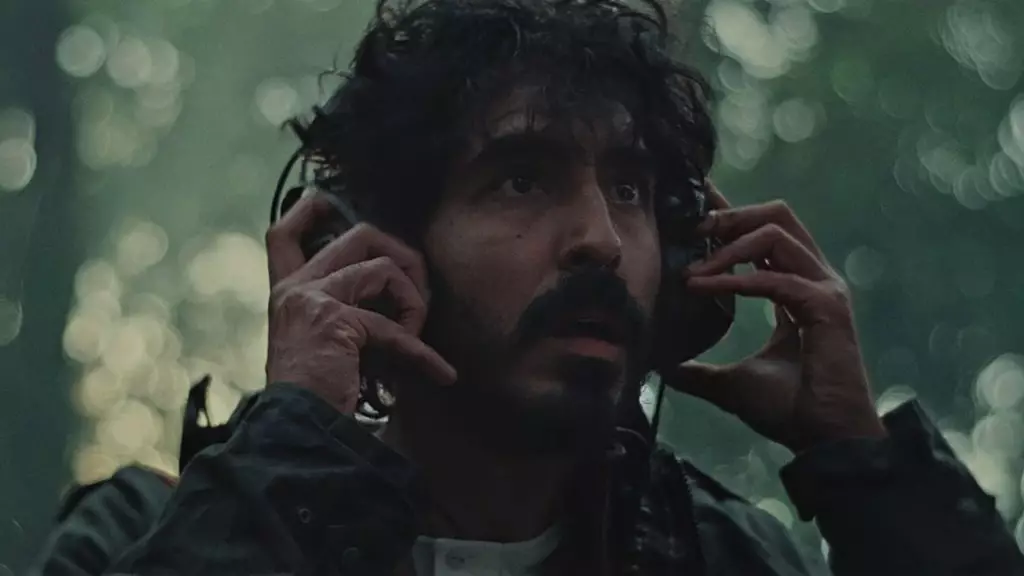Bryn Chaney’s feature film, **Rabbit Trap**, weaves a captivating narrative set against the enchanting backdrop of the Welsh countryside. This debut resonates powerfully by integrating elements of Celtic folklore with a haunting auditory experience, strategically crafted to explore the intricate relationship between creativity and the darkness that often accompanies it. Starring prominent talents, Dev Patel and Rosy McEwen, as the musical couple Darcy and Daphne, the film takes viewers on an exploration of the delicate layers of human emotion intertwined with the supernatural, that vividly brings forth the idea that art can emerge from personal darkness.
The film is rooted in 1973, establishing a bygone era that feels both nostalgic and eerily modern. As Darcy and Daphne retreat to their secluded cabin, seeking solace to complete their latest album, the storyline captures the inherent tension of creatives attempting to rekindle inspiration. Chaney masterfully employs this isolation not just as a physical space, but as a psychological condition that is characteristic of the artistic struggle. Their artistic endeavors soon delve into treacherous waters when Darcy, in a moment of reckless experimentation, unwittingly channels an ethereal entity through his recordings.
This pivotal moment serves as the catalyst for the film’s exploration of sound as more than just a backdrop. It becomes a character in its own right, echoing the subconscious fears and desires of both protagonists. As Darcy proclaims that “sound is a ghost,” the notion that sound transcends mere audio to tap into the haunting aspects of memory and trauma becomes profoundly significant.
In **Rabbit Trap**, sound operates on multiple levels, acting as a bridge between the conscious and subconscious. It becomes a vessel through which the characters confront the fears they struggle to verbalize. One standout technique is the interplay between light and sound, which Chaney uses to accentuate emotional peaks. The unnerving sound design by Graham Reznick, accompanied by Lucrecia Dalt’s dusky score, invites the audience into the dizzying heights and melancholic valleys of Daphne’s creative journey. A particularly striking scene features a sexual tableau set against the backdrop of otherworldly music, embodying a visceral experience that blurs the lines between reality and fantasy.
Simultaneously, sound becomes an avenue for revealing inner turmoil. Darcy’s sleep paralysis manifests in haunting whispers and echoes, providing viewers with an intimate glimpse into the psyche that he struggles to confront. The vulnerability showcased in Patel’s performance shines as he grapples with a darkness that threatens to overshadow their relationship. This multifaceted utilization of sound not only enhances the storytelling but also enriches the emotional stakes, ultimately crafting a tension that permeates the narrative.
The arrival of a nameless child, played by Jade Croot, introduces a new dynamic to the film. This enigmatic figure oscillates between innocence and eerie wisdom, acting as both a guide into local folklore and a looming harbinger of the couple’s escalating dread. Through interactions that blend tenderness and fear, Chaney deftly explores themes of parental instinct and subconscious projections. The interactions between the three characters are exquisite, revealing how deeply intertwined their fates are, while also unearthing buried traumas that threaten to bubble to the surface.
As the couple grapples with their newfound sonic powers and the unpredictable implications they bring, there’s a palpable sense of foreboding that lingers. The emotional weight of trauma manifests in spite of their volatile creative highs, allowing Patel and McEwen to showcase a range of profound performances punctuating the film’s haunting tone.
Bryn Chaney shows immense promise as a filmmaker with *Rabbit Trap*, crafting a narrative that is both visually and sonically immersive. There’s an authenticity to the artistic process on display, reflecting a world where creativity can sprout from both light and darkness. With producers such as Elijah Wood and Lawrence Inglee backing him, Chaney’s narrative prowess blends raw emotional performances with an exquisite attention to the subtleties of sound and folklore, signaling not only an engaging story but also a new voice in contemporary cinema. The film invites audiences to listen closely—not only to the echoes of art and creativity but also to the deeper resonances of humanity that lie beneath the surface.


Leave a Reply